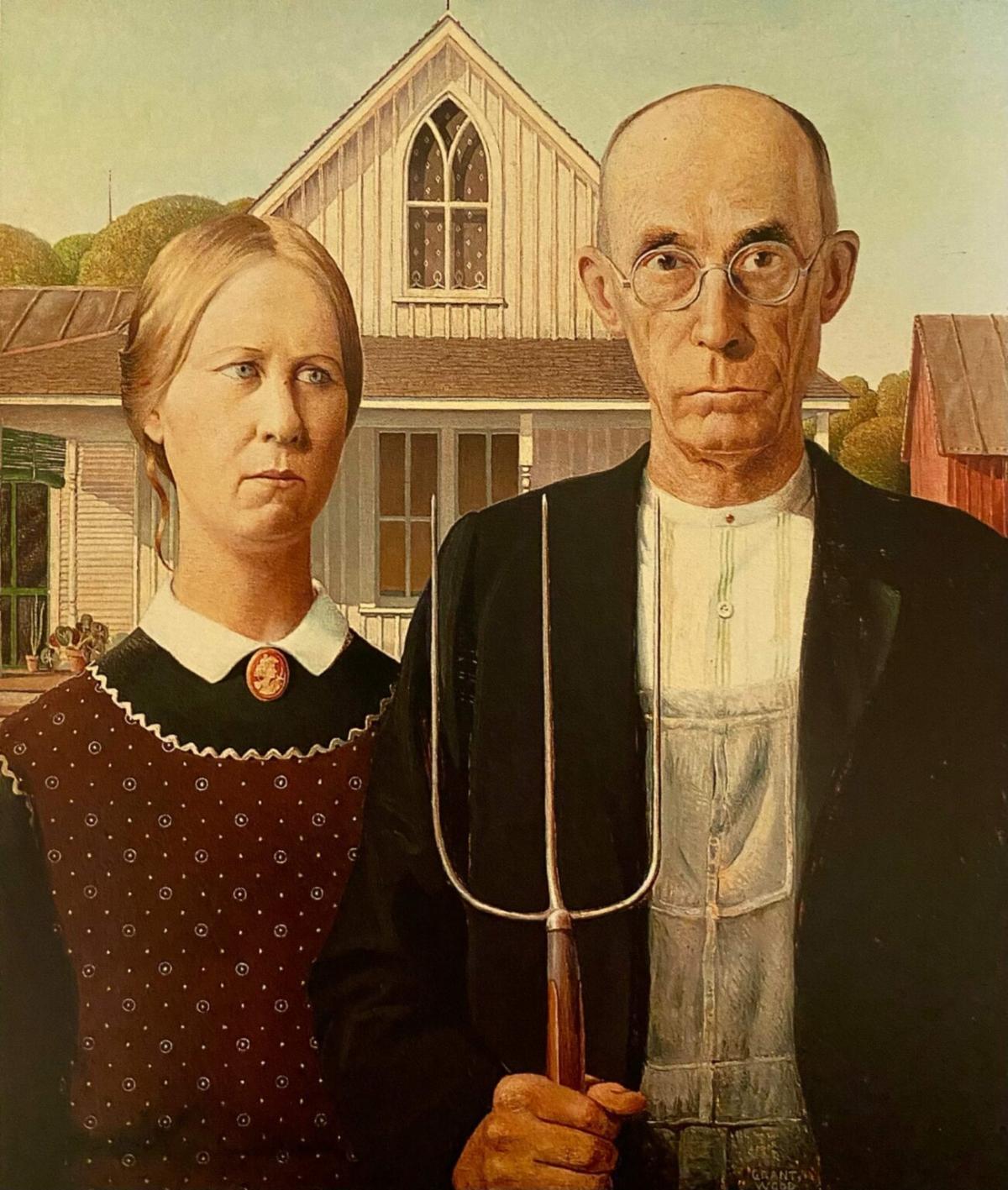This painting depicts a farmer and his daughter standing in front of a farmhouse. The man is holding a pitchfork and both figures express serious expressions. The house behind the two figures shows a house with a peaked roof and a window with a pointed arch. This house creates an ominous atmosphere correlating to the theme of "The Macabre". This portrayal correlates to the theme of "The Macabre" in "The Yellow Wallpaper" by Charlotte Perkins Gilman. The main character's descent into madness correlates to the eerie and haunting atmosphere present in the painting. The obsession the main character has with the yellow wallpaper within the story is expressed through the serious expression and ominous background in the painting.
Gilman states in "The Yellow Wallpaper," "The color is repellent, almost revolting; a smouldering unclean yellow, strangely faded by the slow-turning sunlight. It is a dull yet lurid orange in some places, a sickly sulphur tint in others." This description of the wallpaper sets the tone for the eerie atmosphere present throughout the story and foreshadows the main character's fixation on the unsettling patterns within the wallpaper. Gilman later states, "There are things in that paper that nobody knows but me, or ever will. Behind that outside pattern the dim shapes get clearer every day. It is always the same shape, only very numerous". This fixation on the unsettling figures and shapes within the pattern of the wallpaper contributes to "The Macabre" theme in the story and the painting.
Towards the end of the story, the main character states, "I've got out at last, in spite of you and Jane. And I've pulled off most of the paper, so you can't put me back!" This quote expresses the character's final descent into madness, as she believes she is the woman trapped within the wallpaper. Loralee MacPike states in their article, "Environment as Psychopathological Symbolism in "The Yellow Wallpaper," "As her madness develops, she shifts her own desire for escape from the limitation of her husband's expectations onto the figure behind the undulating bars of the wallpaper, the fire of a woman." This quote further signifies the character's descent into madness as well as sheds light on her husband locking her inside the room, making her feel imprisoned, much like the figure in the wallpaper. These quotes from the story and the portrayal of the painting both express themes of confinement and madness. The main character in the story feels trapped within her room, causing her mental to slowly deteriorate. While the painting figures in the painting seem to be trapped and unsatisfied by their surroundings. The atmosphere perceived in both the painting and the story expresses a theme of confinement and decay, helping to express the theme of "The Macabre".
Works Cited
American Gothic | The Art Institute of Chicago, www.artic.edu/artworks/6565/american-gothic. Accessed 2 May 2024.
“American Gothic.” Wikipedia, Wikimedia Foundation, 22 Apr. 2024, en.wikipedia.org/wiki/American_Gothic.
Cove Studio, studio.covecollective.org/anthologies/eng-235-survey-of-american-literature-sp24/documents/the-yellow-wall-paper. Accessed 2 May 2024.


